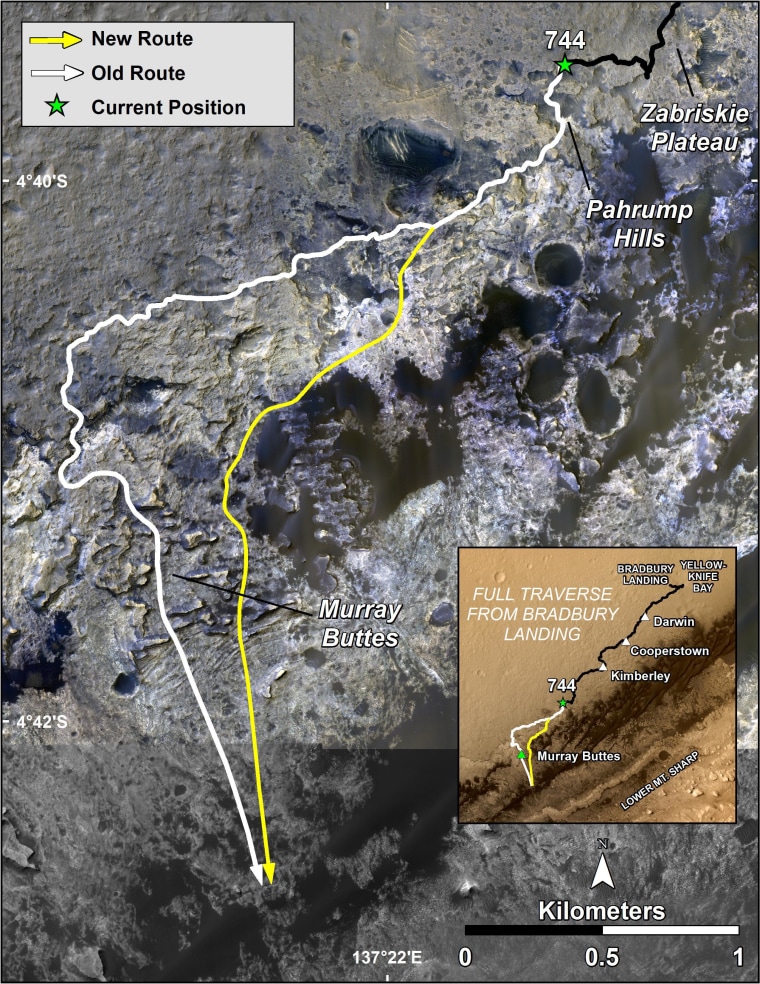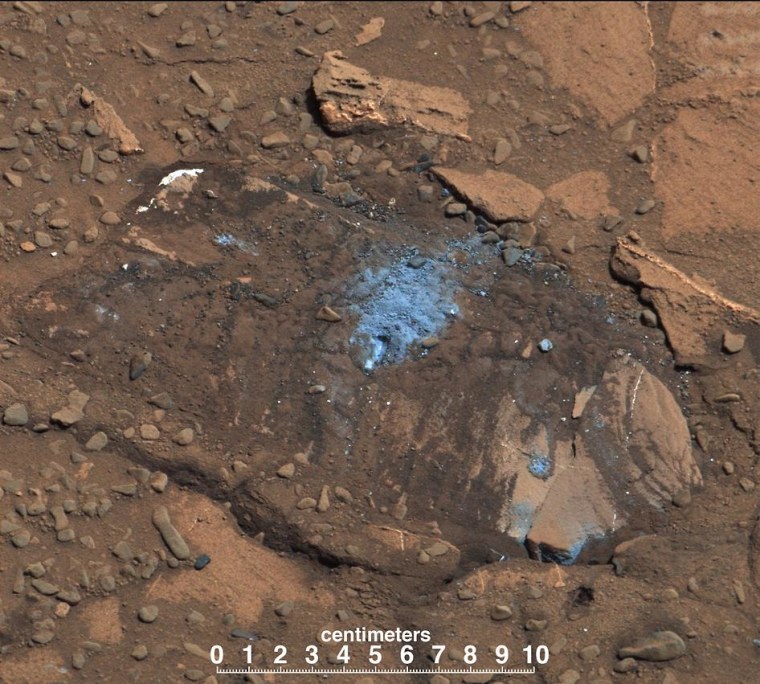After more than two years of trekking on Mars, NASA's Curiosity rover has finally reached the territory it was designed to explore: the foothills of Mount Sharp.
The 3-mile-high (5-kilometer-high) mountain in the middle of Gale Crater, also known as Aeolis Mons, is thought to preserve a wider stretch of the Red Planet's geology than any probe has analyzed previously. The rock layers of the Murray Formation, near the rover's current location, appear to be more than 600 feet (200 meters) thick, mission scientist Katie Stack said Thursday.
"We potentially have millions to tens of millions of years of Martian history just waiting for us to explore," she told reporters during a NASA teleconference.
For more than a year after its landing in August 2012, Curiosity was on an extended detour to a geologically intriguing area in the opposite direction from Mount Sharp, nicknamed Yellowknife Bay. Scientists found out that, in ancient times, the area was a lakebed that was capable of sustaining life as we know it on Earth.
Caltech geologist John Grotzinger, principal investigator for the $2.5 billion Curiosity mission, said the detour was well worth the trouble. But now the main scientific investigation can begin in earnest, he said.
"We have finally arrived at the far frontier that we have sought so long," he said.
Taking a shortcut
Curiosity was built to characterize environments on Mars that could have been potentially habitable on Mars in ancient times, seek out organic carbon molecules and document how the planet changed from a warmer, wetter world to the cold, dry realm we see today.
Over the weeks, months and most likely years to come, Curiosity will analyze Mount Sharp's layers of rock and build up a time line for Mars' climatic and geological shifts.
Curiosity is beginning the job by checking out rocks on the mountain's lower slopes, at an entry point near an outcrop nicknamed Pahrump Hills. At one time, the rover team planned to go on to a farther entry point called Murray Buttes. But the rover's route was changed to reduce the potential wear and tear on Curiosity's battered wheels.

A close look at Pahrump Hills and the terrain just beyond convinced scientists that it was a more promising place for scientific study than Murray Buttes, Grotzinger said.
Curiosity's team has already identified rocks that have an earthy, gray-green look beneath a layer of red Martian dust, with veins of white silica-bearing material running through the rocks. "We believe that this is very important rock to drill. ... It means we're on to something new," Grotzinger said.
The first outcrop, known as Bonanza King, turned out to be too unstable for drilling, but Curiosity's team is checking out similar rocks in the area. Grotzinger said scientists would rely on updated data from Curiosity as well as NASA's Mars Reconnaissance Orbiter to select future targets. Drilling could begin as early as next week.
"I think this will be the most thorough analysis that's ever been done on Mars in a systematic way," he said.

Reviewing the review
Jim Green, director of NASA Headquarters' Planetary Science Division, hailed the rover's arrival at the base of Mount Sharp and said it marked the start of "the next phase of research for Curiosity." He said the extended mission was budgeted at $59.4 million for the next fiscal year.
During the teleconference, several questions were raised about a recent report from NASA's planetary senior review panel, which said the plan for Curiosity's extended mission "lacked scientific focus and detail." The mission was given a "very good / good" rating — which was not as high as the ranking given to, say, the Mars Opportunity mission or the Cassini mission to Saturn.
Green downplayed the controversy, and emphasized how much science was being returned by the Curiosity mission. He acknowledged, however, that not everyone was satisfied. "It's not all unanimity," he told reporters.